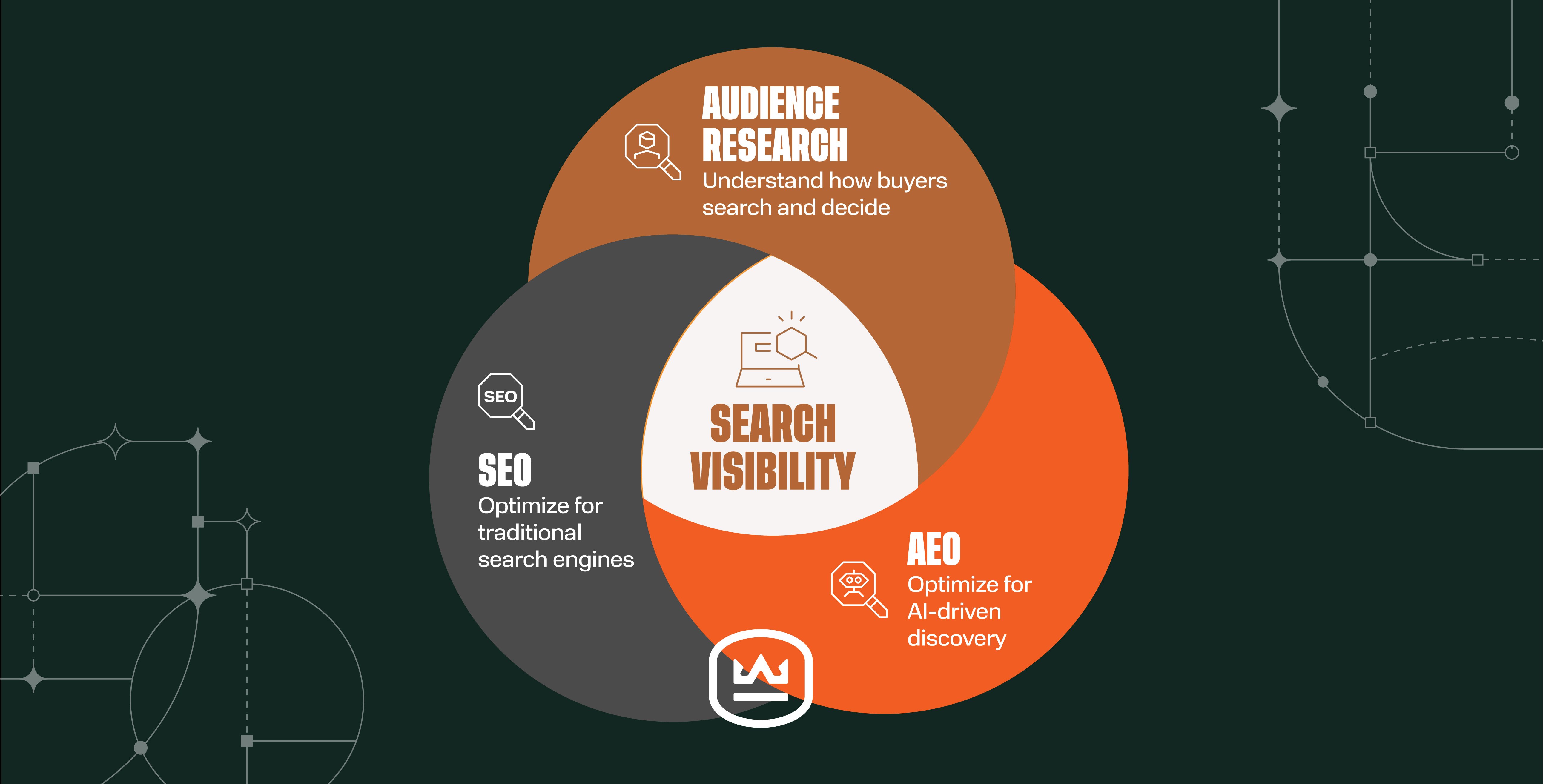9 Tips to Become the Best Content Creator in Your Industry
Written by
Whether it’s “you” as an individual or “you” as an organization, it’s possible for you to become the premier publisher of content tailored to your industry.
But it takes time, effort, and discipline.
This isn’t just a basic explanation of how to become a content creator who commands attention in your industry; it’s the first step in how to soon be seen as a thought leader, building relationships and attracting qualified prospects who are eager to solve their challenges.
1. Stay Current
Be up-to-date and knowledgeable about all facets of your industry, not just what’s immediately relevant to you. Follow industry leaders and peers on all social media platforms, read trade publications, and search for the latest relevant news. Stay in-the-know about innovations, trends, regulations, opportunities, and day-to-day threats.
Change in your industry happens fast, and ongoing education is important. That means not only creating content that people love, but also reading others’ content. The best content creators are curious and look for topics their target audience cares about. Learn from others and connect the dots to understand what may affect your prospects.
2. Understand Your Audience
Do what you can to understand your audience’s motivations, reporting relationships, education, social activities, and much more. A deep empathy is the only way to address their needs with your content. Don’t make broad assumptions, or you’ll sound like everyone else and just be another drop in the bucket.
3. Improve Your Skills
If you’re not a professional copywriter, put in the work and learn enough so that no one will know the difference. Start by avoiding common business writing mistakes. Then, check out some quick-read books available to help you overcome common missteps (like overwriting, awkward phrasing, paragraphs that don’t flow, etc.). One of the best: Strunk & White’s classic, Elements of Style.
4. Write Often
The more content you have out there, the more traffic you’ll attract to your website. Depending on your blog size and specific goal (brand awareness vs. maximizing organic traffic), HubSpot recommends blogging at least 1-5 times each week.1
Experts aren’t shy about sharing their insights. If you want to become the premier publisher in your industry, you have to commit to acting like one. It’s not something you do only when you “have time.” Digital content creation requires a full-time commitment.
RELATED: The Ultimate List of No-Fail B2B Blogging Best Practices
5. Find Your Voice
Write often, but don’t crank out content just to fill a calendar or get something published quickly. That makes for dry, plodding, and lifeless work. Let your (or your company’s) personality shine through! Writing your content isn’t about exacting sentence structure and pulling out the biggest words; it’s about communicating your ideas well and naturally while still abiding by your content marketing strategy.
6. Give Examples
You make things much more real and relatable when you give people examples of what you’re discussing.
For example, imagine you were writing about the difference between commodity whey protein and functional whey protein, and you wanted to describe texture. Don’t just write, “Functional whey protein allows you to replace cream in a bakery formulation while maintaining the same texture.”
Instead, write something like this: “Functional whey protein allows you to replace cream in a bakery formulation while maintaining the same rich texture, creaminess, and velvety smooth consistency your customers know and love.”
7. Don’t Talk About Yourself
Talk about your customers and prospects. When you talk about yourself, you’ve lost the opportunity to demonstrate that you understand and can address your prospects' needs and challenges. Look at the difference between these two blocks of copy:
“Acme is the leading manufacturer of valves. We have better quality, better customer service, and we’ve been in business since 1987.”
“Acme delivers confidence to its customers who rely on our valves to reduce their downtime by 13%. Customers are also able to eliminate overstocks and stockouts because our supply chain management system is fully optimized to meet their needs.”
8. Do Your Keyword Research
Writing requires both art and science. Of course, you need to know what type of content to write and how to make it resonate with readers. In today’s digital marketing landscape, you also need to make it appealing to search engines. Fortunately, search engine optimization (SEO) considers relevance to readers a top priority, so you don’t have to think of these ideas as mutually exclusive.
Hone your writing skills, but also leverage SEO tools to help you maximize your content efforts. After all, it’s disappointing to put your heart and soul into a blog post or other content only to have it fall flat. Incorporating relevant keywords and other SEO tactics is a critical element of any content strategy.
LEARN MORE: How Can SEO Improve Inbound Results?
9. Supplement with Video
Video capabilities are literally right in your pocket. You don’t have to create elaborate productions; a simple tour of your facilities or a service demo using your smartphone’s camera can add value to your overall content plan, especially when connecting to an audience through social media posts.
Writing a blog about your latest product? Include a quick video presentation showing it off. Are you marking a milestone? Record the celebration to connect with your audience on social networks. The possibilities with video content marketing are almost endless!
A Head Start in Content Creation
These content creation tips can be your launching point into a successful content marketing strategy. Still, knowing the importance of good content, it’s understandable to find it a bit daunting.
When talking to clients new to this process, one of the best pieces of advice we can provide is, “Think like a prospect.” Doing so puts you in the best position to create content that prospects are more than happy to exchange their contact information for. That’s the key to successfully engaging visitors, converting them into leads and, ultimately, turning them into paying customers.
To help you get started, we’ve created several content creation templates and checklists. Click the link below to check them out.
SOURCE
1HubSpot, How Often Should You (or Your Company) Blog? [New Data], May 6, 2022
Subscribe To Our Blog
Information. Insights. Ideas. Get notified every time a new Weidert Group blog article is published – subscribe now!
You May Also Like...

Search Engine Optimization
How Falcon Rebuilt Industrial AI Search Visibility in 2025

Search Engine Optimization
The New Search Visibility Checklist for AI-Era Content Marketing

Search Engine Optimization
SEO Isn’t Dead. It’s Evolving: How B2Bs Can Stay Visible in the Age of AI
Accelerate Your Growth with
Weidert Group
If you’re ready to explore a partnership, request a personalized consultation with our team.

